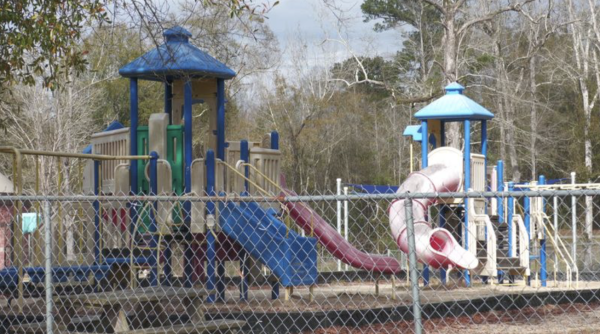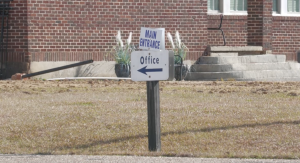
by Morgan Gill and Evan Baronich, RHCJC
LEAKESVILLE — Mississippi’s education system faces a critical teacher shortage, particularly in rural areas like Greene County, where school leaders struggle to recruit and retain experienced educators.
“We need good teachers. We need good, strong individuals that know their content and know how to deal with children because it takes both,” said Greene County Schools Superintendent Charles Breland.
The Mississippi Department of Education’s 2024-2025 Educator Shortage Survey revealed nearly 5,160 vacancies statewide, spanning teaching, administrative and support staff roles. While this marks an increase of 148 vacancies compared to the 2023-24 school year, it represents a decrease of 343 since the survey’s initial administration in 2021-22. Nearly half of all Mississippi schools report at least one vacancy, with districts in the Delta, the northeast corner of the state and rural areas being most impacted.

“One thing we know about the teacher shortage here in Mississippi is that it’s not getting any better,” said Erica Jones, president of the Mississippi Association of Educators. “We had high hopes that we would be attracting new educators to our state — that just seems not to be happening.”
Mississippi has long struggled to compete with neighboring states on teacher salaries, which are among the lowest in the nation.
“Of course, the pay and the benefits are not as great as other areas that they can go into and get a four-year degree and work in,” Breland said. “We’re not able to recruit young teachers because they have better pay and they have better benefits in Alabama.”
The Economic Policy Institute reports that as of 2023, teachers nationwide earned 26.6% less than workers with similar educational credentials, and Mississippi’s average teacher salary is just $53,354. The state also received an “F” on its teacher pension report card, according to Teachers of Tomorrow, making it challenging to attract and retain educators, especially in specialized fields like STEM, foreign languages, and special education.
Teacher turnover and local challenges
Mississippi’s teacher turnover rate aligns with the national average of 23%, but rural and high-poverty areas face unique difficulties.
According to Breland, Greene County has multiple vacancies in elementary education, a growing issue in a previous non-problematic area.

“This year we had several situations where we hired a part-time retired teacher, and she or he would teach one semester, and then we’ll hire another one to teach the other semester,” Breland explains.
Teacher shortages disproportionately affect high-poverty and majority-minority schools. National surveys reveal that 57% of higher-poverty schools report feeling understaffed compared to 42% of low-poverty schools. Similarly, schools with more than 75% minority enrollment report greater staffing challenges than those with fewer minority students.
According to the Learning Policy Institute, turnover is highest in schools with limited resources and larger class sizes, adding stress for educators and negatively impacting student outcomes.
In Greene County, socioeconomic challenges further exacerbate the shortage. The county’s poverty rate remains significantly higher than state and national averages:
• In 2023, 22.1% of Greene County’s population lived in poverty.
• By January 2025, this rate decreased slightly to 19.6%.
• By comparison, Mississippi’s poverty rate in 2019 was 19.5%, and the U.S. poverty rate was 12.4% in 2023.
The Economic Policy Institute warns without systemic investments in teacher pay and professional development, these shortages will deepen inequities in education. Mississippi has an opportunity to lead the way in addressing this crisis, particularly as neighboring states like Louisiana, Alabama, and Tennessee did not make Teachers of Tomorrow’s top 20 states for teachers in 2025.
On the positive side, Mississippi’s cost of living is 11% lower than the national average, providing some financial relief for educators, according to Teachers of Tomorrow. Despite this, professional development opportunities and resources for teachers remain below average.
Breland said change starts with support and higher salaries.
“Number one, the lack of respect for the profession,” Breland said. “I think it’s been put in a negative light, and it’s steered a lot of people away from majoring in that area.”
Jones emphasized the demands of the teaching profession, noting that extensive training is required for teachers, comparable to fields like engineering or law, but without equivalent pay. Furthermore, fewer college students are pursuing education degrees, according to the National Bureau of Economic Research, worsening the staffing crisis.
Solutions and programs making a difference
Efforts are underway to address Mississippi’s critical teacher shortage. The Mississippi Department of Education has implemented several key strategies:
• Educator Talent Portal: Part of the Mississippi Educator Career Continuum Archive, this platform aids recruitment efforts.
• Licensure policy revisions: Comprehensive reviews aim to simplify certification processes in shortage areas.
• MS LEADS initiative: The Mississippi Leading Education Achievement in Districts and Schools initiative focuses on effective district and school leadership.

Local institutions like William Carey University are also making a difference. The university’s Grow Your Own Teacher Education Program offers high school students dual enrollment opportunities, tuition waivers and an accelerated path to earning a bachelor’s degree in education.
“Usually about 150 students a year graduate through our Grow Your Own program,” said Dr. Deidra Gammell, assistant professor in the school of education at William Carey University. “If you count the teacher assistants and high school students coming through, we graduate about 500 education students each year.”
The Mississippi Association of Educators is working with insurance companies to address rising premiums and advocating for competitive salary packages to retain educators.
Those pushing to reduce the educator shortage argue Mississippi’s future depends on ensuring every child has access to high-quality education and every teacher feels valued in their role. Stakeholders across the state agree prioritizing teacher pay, reducing administrative burdens and expanding recruitment pipelines must be key strategies moving forward.
“Closing the shortage requires systemic investments,” said Jones to our partners at the Mississippi Business Journal. “We must work with legislators, communities, and educators to solve this crisis. Our students deserve better. Our educators deserve better.”
By addressing pay disparities, investing in retention programs and expanding professional development opportunities, Mississippi can create a stronger, more equitable education system.
The post Rural Mississippi schools fight to attract and keep teachers amid shortages appeared first on Mississippi Today.
